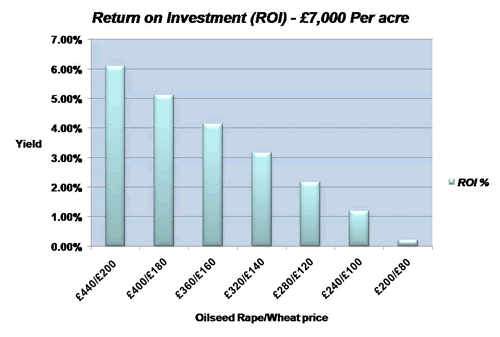
Despite the economic downtown, farmland prices are expected to rise substantially in 2011 as the supply and demand imbalance of 2010 continues.
2010 saw land values increase by an average of 15% with bare arable Grade 3 land prices ranging from around £4,500 an acre to well over £6,000 an acre. A background of strengthening product prices and worldwide increasing demand for food, investment in farmland and food production both in the UK and other parts of the world is attracting serious investment funds.
It has been reported that there are funds looking to invest in UK farmland with a total purchase power of £7.5 billion. This would purchase more than 1,000,000 acres whereas the volume available for sale in any one year is averaging around 130,000 acres.
The wide range in values depends on local market circumstances. As an investment class, farmland has shown remarkable resilience compared to other types during the economic downturn. In periods of economic uncertainty farmland is seen as a safe investment. Demand has remained strong, especially for larger commercial blocks and equipped farms where supply has been constrained. Deals struck in the early part of this year have indicated that prices are increasing to over £7,000 an acre for Grade 3 cereal growing land.
The farm rental market is also going from strength to strength. Agricultural Holdings Act (AHA) secure tenancy reviews saw a 20% increase in 2010 with Farm Business Tenancies (FBT) reviews having a 30% increase. New FBTs have been around 20%-30% above comparable review levels. Reviewed FBTs were at around £125 per acre whereas new FBTs are ranging from £150 to £200 an acre.
Robert Hurst, Partner at Fisher German comments, "If the supply of land increased the likely effect is to generate more activity and hype in the market and land values will remain strong.
"One big question is, ’Is it worth it?’, and at what level does price resistance start to kick in? Historically the purchase of farmland has produced investment yields in the range of 2.5% to 4%. With current produce prices for wheat and rape the purchase of land capable of yielding 3.65 tonnes per acre of wheat and 1.5 tonnes per acre of rape would produce an investment yield of around 4% based on land at values of £7,000 per acre.
Whilst the market is underpinned by the factors of strong demand, low interest rates, improved product prices, a benign tax regime, particularly Inheritance Tax relating to farmland, price resistance will only become a serious issue among those buyers whose primary reason for purchase is return on investment".
